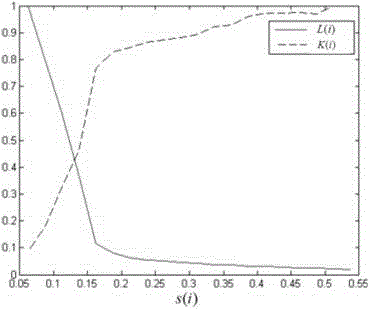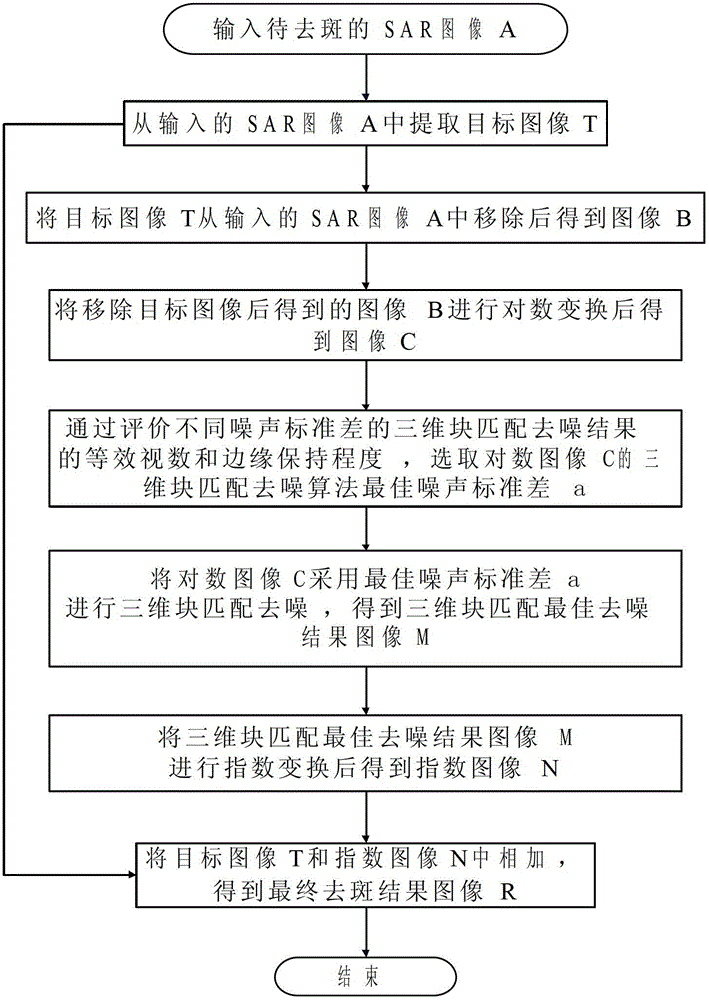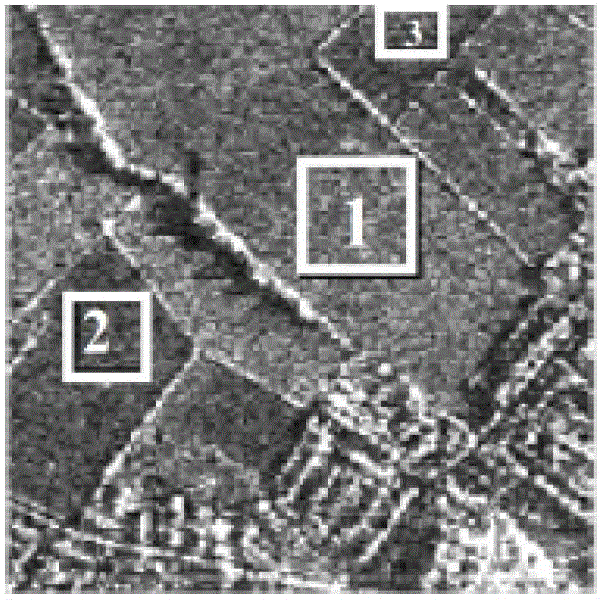SAR (synthetic aperture radar) image despeckle method based on target extraction and three-dimensional block matching denoising
A target image and target extraction technology, applied in the field of image processing, can solve the problems of SAR image noise standard deviation, error, and inability to obtain speckle removal effect, etc.
- Summary
- Abstract
- Description
- Claims
- Application Information
AI Technical Summary
Problems solved by technology
Method used
Image
Examples
Embodiment Construction
[0038] refer to figure 1 , the specific implementation process of the present invention is as follows:
[0039] Step 1. Extract the details and edges of the target image from the input SAR image A to obtain the extracted target image T:
[0040] 1a) Perform bilateral filtering on the input SAR image A, set the threshold Y to 120 to 180, set the gray value of the pixels whose gray value is smaller than the threshold Y in the filtering result image to 0, and obtain the bilateral filtering edge image E, For the specific implementation of the bilateral filtering algorithm, see Tomasi, C., and Manduchi, R.: "Bilateral filtering for gray and color Images". Proc. 6th Int. Conf. Computer Vision, New Delhi, India, 1998, pp.839–846 ;
[0041] 1b) Use the canny operator to perform edge detection on the input SAR image A, and obtain the canny edge image F;
[0042] 1c) adding the bilateral filter edge image E and the canny edge image F to obtain the total edge image G of the input SAR ...
PUM
 Login to View More
Login to View More Abstract
Description
Claims
Application Information
 Login to View More
Login to View More - R&D
- Intellectual Property
- Life Sciences
- Materials
- Tech Scout
- Unparalleled Data Quality
- Higher Quality Content
- 60% Fewer Hallucinations
Browse by: Latest US Patents, China's latest patents, Technical Efficacy Thesaurus, Application Domain, Technology Topic, Popular Technical Reports.
© 2025 PatSnap. All rights reserved.Legal|Privacy policy|Modern Slavery Act Transparency Statement|Sitemap|About US| Contact US: help@patsnap.com



